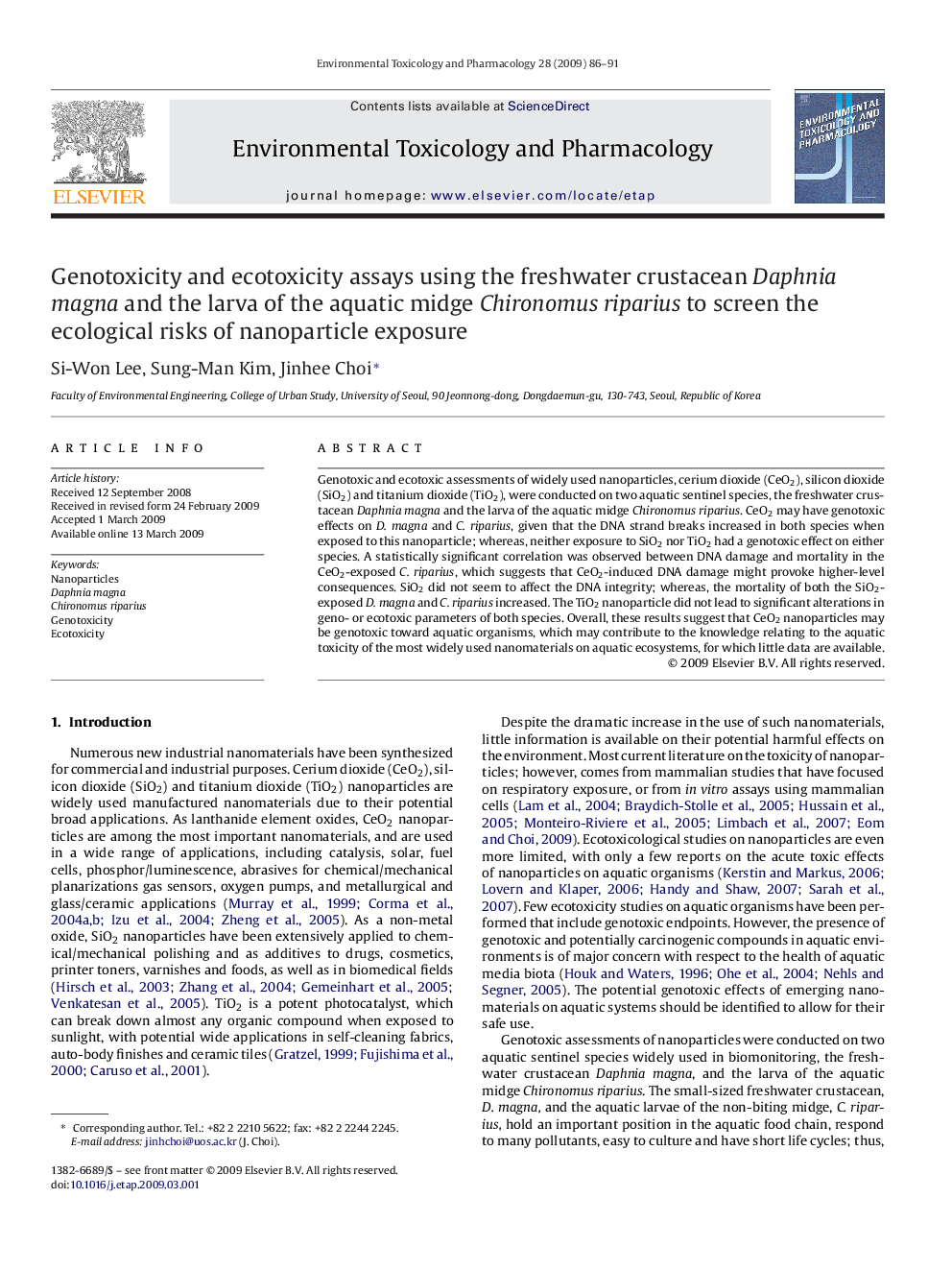| Article ID | Journal | Published Year | Pages | File Type |
|---|---|---|---|---|
| 2583853 | Environmental Toxicology and Pharmacology | 2009 | 6 Pages |
Genotoxic and ecotoxic assessments of widely used nanoparticles, cerium dioxide (CeO2), silicon dioxide (SiO2) and titanium dioxide (TiO2), were conducted on two aquatic sentinel species, the freshwater crustacean Daphnia magna and the larva of the aquatic midge Chironomus riparius. CeO2 may have genotoxic effects on D. magna and C. riparius, given that the DNA strand breaks increased in both species when exposed to this nanoparticle; whereas, neither exposure to SiO2 nor TiO2 had a genotoxic effect on either species. A statistically significant correlation was observed between DNA damage and mortality in the CeO2-exposed C. riparius, which suggests that CeO2-induced DNA damage might provoke higher-level consequences. SiO2 did not seem to affect the DNA integrity; whereas, the mortality of both the SiO2-exposed D. magna and C. riparius increased. The TiO2 nanoparticle did not lead to significant alterations in geno- or ecotoxic parameters of both species. Overall, these results suggest that CeO2 nanoparticles may be genotoxic toward aquatic organisms, which may contribute to the knowledge relating to the aquatic toxicity of the most widely used nanomaterials on aquatic ecosystems, for which little data are available.
